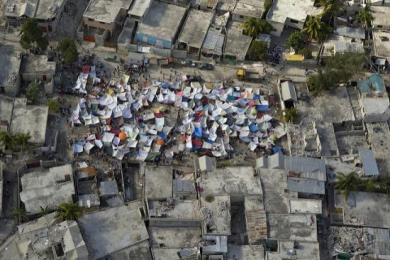Members of the satellite community signed contribution agreements in Luxembourg on 17 May 2018 with the United Nations World Food Programme (WFP), on behalf of the Emergency Telecommunications Cluster (ETC), to step-up their commitments to support global disaster relief.
The contribution agreements signed by Eutelsat, Global Eagle, Hispasat, Inmarsat, Intelsat, SES, Thuraya and Yahsat represent the final steps in operationalizing the Crisis Connectivity Charter, signed in 2015 between the Europe, Middle East and Africa Satellite Operators Association (ESOA), the Global VSAT Forum (GVF), the UN Office for Coordination of Humanitarian Aid (OCHA) and the ETC.
The Crisis Connectivity Charter sets out principles to demonstrate and enhance the way the satellite community can enable communications for all stakeholders impacted by a disaster situation. The charter aims to improve access to communication for those affected by or involved in responding to disaster situations, so driving efficient solutions in the field and ultimately reducing the impact of disasters.
The agreements ensure that space-based technology is more readily available for states suffering disaster situations. Under the new contribution agreement, the satellite industry commits satellite equipment and capacity access during emergencies to support humanitarian aid operations such as logistics, urgent medical care, food delivery and the coordination of relief efforts. The re-establishment of communications is vital in emergency response operations. Equipment donated by the satellite firms will be stored at several United Nations facilities around the world while pre-allocated satellite bandwidth will cover all regions of the globe. The signatories to the charter have also committed to providing training courses and capacity-building activities for WFP and ETC partners’ field-staff on the installation and use of the satellite equipment.
The Contribution Agreements and the Crisis Connectivity Charter stipulates that the ETC, under the leadership of the WFP, will be able to activate the charter when disaster strikes a region or state. The ETC will also identify which pre-planned solutions are immediately available for any given region in order to meet a 24-hour deployment timeline after a crisis.
Since signing the Crisis Connectivity Charter, satellite operators have been active on all continents supporting WFP, governments and NGOs, for instance during hurricanes Irma and Maria, as well as during disasters in Haiti, Nepal and Vanuatu. During emergencies, WiFi, internet access including Voice over Internet Protocol (VoIP) has been enabled via satellite in order to provide vital support to humanitarian operations. Satellite communication has also strengthened disaster response in the Philippines, with emergency responders gaining access to mobile satellite equipment to aid their emergency response. (Read more)
The Emergency Communications Cluster
The Emergency Communications Cluster (ETC) is a global network of humanitarian, private sector and governmental organizations that work together in disasters to provide vital communications services. ETC creates an environment for emergency response that allows humanitarian responders, citizens and governments to have access to vital communication technologies through its partnership with leading technology companies and local telecom providers. The ETC is one of the eleven clusters designated by the Inter-Agency Standing Committee (IASC).
This article was contributed by Jack Kavanagh, UN Online Volunteer mobilized through www.onlinevolunteering.org.

